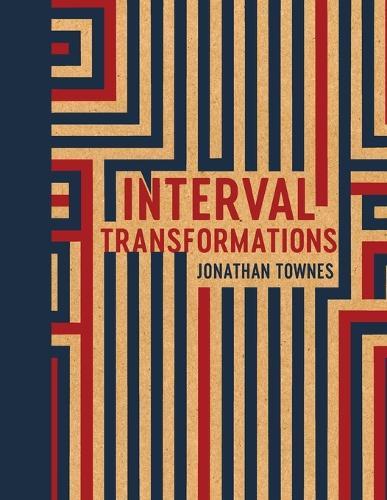Overview
Interval Transformations is the third and final chapter in a series of books devoted to melodic transformation. The journey began with Octo Gradus Transformationis, which introduced scalar variation through the logic of eight structured contours. It continued with Pentatonic Transformations, applying that same logic to five-note terrain. This volume completes the cycle, turning fully toward interval. For the improviser, composer, and theorist, it offers a terrain of angular possibility - a collection of melodic motion shaped by the eight transformations system. Across all three collections, the question remains constant: what can we do with a simple melodic fragment, once we begin to transform it? The System: Methodical Variation and Angularity This collection is built on the Octo Gradus Transformationis system - a framework for melodic variation that invites the player to stretch a single seed across eight distinct contours. The logic is methodical, but the result is anything but smooth. These sequences are jagged, spacious, and deliberately angular. They move through thirds, fourths, fifths, sixths, and sevenths - not to flatten the terrain, but to open it. Unlike scalar lines, which often flow predictably, these intervallic shapes resist resolution. They demand attention. Even within diatonic terrain, they create tension and surprise. The goal is not comfort - it's expansion. Each transformation offers a new way to inhabit the fragment, a new shape toward which to tune the ear and hand. The Eight Transformations Explained At the heart of this collection are the eight transformations - structured contours that process a melodic seed into eight distinct shapes. These are not exercises in symmetry; they are invitations to move differently. The first four transformations are directional. Even-numbered sequences ascend. Odd-numbered sequences descend. Each is treated as a sovereign phrase, not a mirror image. This distinction matters: it trains the improviser to hear ascent and descent as separate logics, each with its own emotional weight. Transformations five through eight introduce compound motion. Retrograde, inversion, and layered shifts stretch the seed into its most unexpected forms. These are the most challenging contours in the collection - dense, angular, and often disorienting. They are designed not to be mastered, but to be inhabited. Philosophy and Practice The philosophy behind this collection is simple: any melodic fragment can be transformed into compelling musical lines. Through systematic exploration, even the smallest seed reveals unexpected shapes, tensions, and contours. The exercises in this book - and in the two companion collections - offer a way to experience that transformation directly. By playing through these sequences, students begin to hear how a fragment can be stretched, inverted, and reoriented. Over time, the logic becomes familiar. Not through theory, but through practice. The goal is not to memorize patterns, but to develop a personal understanding of how melodic material behaves when placed under transformation.
Full Product Details
Author: Jonathan Townes
Publisher: Giglaeoplexis Publishing
Imprint: Giglaeoplexis Publishing
Dimensions:
Width: 21.60cm
, Height: 0.60cm
, Length: 27.90cm
Weight: 0.277kg
ISBN: 9798330461912
Pages: 82
Publication Date: 31 October 2025
Audience:
General/trade
,
General
Format: Paperback
Publisher's Status: Active
Availability: Not yet available

This item is yet to be released. You can pre-order this item and we will dispatch it to you upon its release.
Author Information
Jonathan Townes is a composer, educator, and ritual architect whose work bridges traditional theory, modular design, and expressive transformation. With over 45 years of experience in music composition and instruction, he has developed a sovereign pedagogical system rooted in clarity, logic, and emotional resonance.His catalog includes The Rhythmic Counting Workbook, 82 Études for Four & Five String Bass, and the nine-volume series Octo Gradus Transformationis: Ratio Et Modus - a modular framework for melodic development that blends scale exercises, seed window logic, and transformational processes.Jonathan's approach honors recursive tonal logic, symbolic music design, and the expressive clarity of structured improvisation. Whether teaching, composing, or mythologizing the creative process, his work invites musicians into a deeper relationship with sound, structure, and self.



